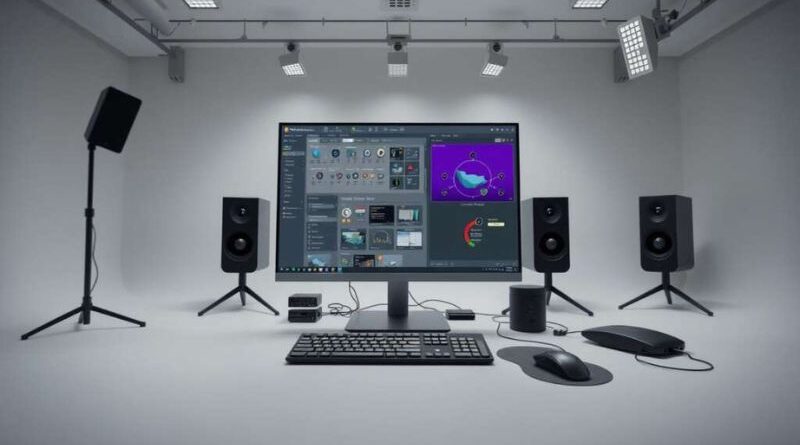SFM Compile
Introduction
In the world of digital animation and game design, Source Filmmaker (SFM) stands out as one of the most accessible and powerful tools available. Developed by Valve, SFM is a movie-making tool that allows users to create animated films using the Source game engine. One term that often confuses newcomers to this platform is “SFM Compile.” If you’ve come across this term and wondered what it means, how it works, and why it matters, you’re in the right place.
This article explores what “SFM Compile” entails, the processes behind it, common tools and techniques involved, and how creators can optimize their SFM projects for better output. Whether you’re an aspiring animator or a seasoned SFM creator, understanding the compile process is essential for creating polished, professional-quality animations.
What Is SFM Compile?
SFM Compile refers to the process of rendering or converting your SFM project (which may include animations, models, lighting, and audio) into a final video or image format. Think of it as the final step in producing a movie: you’ve done all the editing and animation, and now you need to compile everything into a watchable format like MP4 or AVI.
This process includes:
- Rendering frames
- Applying effects and lighting
- Finalizing camera angles
- Exporting the animation into a usable file
Why Is Compilation Important in SFM?
Compilation is essential because your SFM project doesn’t automatically exist as a movie file. While you’re working on it inside the software, you’re essentially manipulating scene elements in a 3D workspace. Compilation transforms all those pieces into a single, coherent output.
Here’s why it matters:
- Performance Optimization: Compiling reduces the processing load by consolidating complex animations into one file.
- Sharing: You need a compiled video to upload your work to YouTube, social media, or portfolios.
- Archiving: A final compiled video allows you to preserve your work without having to re-render every time.
- Editing Compatibility: Once compiled, your video can be imported into other software like Adobe Premiere Pro for additional editing.
The SFM Compilation Process: Step-by-Step
Let’s walk through the basic steps involved in compiling your project in SFM.
1. Prepare Your Scene
Before you even begin the compilation process, ensure your scene is ready. Double-check:
- Lighting
- Camera angles
- Facial expressions
- Lip-sync
- Props and background details
This is the last chance to make changes before rendering.
2. Open the Export Panel
In SFM:
- Click on
File>Export>Movie... - This opens the export panel where you’ll configure output settings.
3. Choose Export Settings
You’ll need to configure:
- Output File Name & Location: Where your compiled file will be saved.
- Resolution: Common choices are 720p, 1080p, or even 4K if your system supports it.
- Frame Rate: 24 fps is cinematic standard, but you can go higher for smoother animations.
- Format: Choose AVI or MP4 depending on your desired quality and usage.
4. Render
Hit “Export” or “Render.” Depending on your system and the complexity of your scene, this could take minutes to hours. SFM renders each frame and compiles them into the final video format.
Common Challenges During Compilation
1. Long Render Times
- High-resolution scenes and complex lighting setups can slow down the process.
2. Crashes and Freezes
- SFM may crash if your system runs out of RAM or GPU power during compilation. Save often.
3. Missing Assets or Textures
- Ensure all custom models, sounds, and textures are correctly loaded before exporting.
4. Audio Sync Issues
- Sometimes the compiled audio doesn’t sync with the animation. This can often be fixed by re-exporting or adjusting your timeline.
Tips for a Smoother Compilation Experience
- Use GPU Acceleration: If available, it speeds up rendering.
- Render in Segments: Split long projects into parts and compile them separately.
- Backup Regularly: Avoid data loss due to crashes.
- Use Third-Party Tools: Software like VirtualDub or HandBrake can optimize file size and format after compilation.
Advanced Techniques: Multi-Pass Rendering
For professionals seeking cinematic results, multi-pass rendering is a technique that involves rendering:
- Lighting separately
- Shadows as a different pass
- Effects like motion blur or depth of field in post-production
This method allows greater control during editing but requires more effort and storage space.
SFM Compile Tools and Add-Ons
Over the years, the SFM community has developed tools to improve the compile process:
- Crowbar: Useful for decompiling and compiling model files.
- VTFEdit: Used for editing texture files.
- SFMTools (Blender Plugins): For working with SFM content in Blender before exporting back to SFM.
These tools don’t directly compile videos but help you prepare assets and manage your workflow effectively.
How Does SFM Compile Differ from Game Compilation?
It’s important not to confuse SFM Compile with compiling a Source engine game mod. While the terminology may overlap, compiling in a game development context often involves compiling maps (.bsp), models (.mdl), or code. In SFM, you’re compiling the final visual output—not the game engine’s assets.
The Role of Community in SFM Compilation
The SFM community is incredibly active. Forums like Reddit’s r/SFM, Steam Community, and YouTube tutorials are filled with advice on compile settings, troubleshooting, and best practices.
You can also find pre-built render settings or downloadable templates that help simplify the process, especially for beginners.
Final Thoughts
SFM Compile may sound technical, but it’s simply the final step in turning your creative vision into a shareable, polished animation. Whether you’re crafting a cinematic short film or a meme-worthy scene, understanding the compile process is crucial to achieving professional results. As you grow your skills in SFM, compiling will become second nature, but starting with a solid grasp of the basics is the key.
So, prepare your timeline, fine-tune your lighting, and hit that render button—your animated masterpiece awaits.
FAQs About SFM Compile
Q1: What is the best format for compiling in SFM?
A: Most users prefer AVI for higher quality, but MP4 is smaller and more compatible with modern platforms. You can also render image sequences and compile them externally.
Q2: Why does SFM crash during compilation?
A: Crashes usually occur due to lack of memory or missing assets. Make sure your PC meets the requirements and all models/textures are loaded correctly.
Q3: Can I compile in 4K resolution?
A: Yes, but it requires a powerful system. Set your resolution in the export settings and be prepared for longer render times.
Q4: How do I reduce render time?
A: Lower the resolution, reduce lighting complexity, or render in smaller segments to speed up the process.
Q5: What tools help with post-compilation editing?
A: Adobe Premiere Pro, DaVinci Resolve, and HitFilm Express are great for editing compiled SFM videos with professional results.


